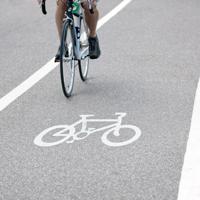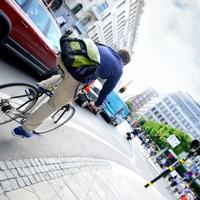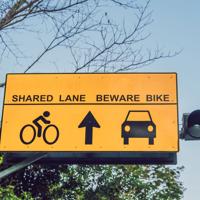Route Planning
Discover practical strategies for planning your bicycle commuting route, balancing safety, efficiency, and enjoyment.
Navigating urban landscapes on a bicycle can be rewarding and, with a bit of planning, highly efficient. Whether you’re a seasoned cyclist or a newbie to the world of bike commuting, finding a route that balances safety, speed, and enjoyment can make all the difference. In this article, we’ll explore practical strategies for planning your cycling route.
Understanding Your Preferences
Before mapping out your route, it’s important to understand your personal preferences and limitations. Do you prefer a scenic, leisurely ride, or are you looking for a quick and efficient path? Are you comfortable riding on roads with heavy traffic, or do you prefer bike lanes and trails? Knowing your comfort level will guide your planning process.
Tools for Route Planning
There are numerous online tools and apps available that can aid in planning your route. Google Maps, for example, offers a bicycle route feature that highlights bike lanes and trails. Apps like Komoot or Ride with GPS provide cyclist-specific navigation and insights from other riders’ experiences.
It’s worth exploring multiple tools to see which suits your needs best. Each platform might show different routes or offer additional information about road conditions and elevation changes.
Planning a Safe Route
Safety should be a top priority when planning your cycling route. Here are a few tips to consider:
-
Choose Bike-Friendly Routes: Look for roads with dedicated bike lanes or paths. Websites like BikeMaps.org can offer information from local cyclists about bike-friendly areas and potential hazards.
-
Avoid High-Traffic Areas: If possible, opt for less congested roads, especially during peak commuting hours. Residential streets or paths through parks can often be quieter and more pleasant.
-
Consider Road Conditions: Be aware of road surfaces. Paved trails and roads are typically more comfortable than routes with gravel or uneven surfaces.
Incorporating Rest and Relief Stops
Even on short commutes, knowing where potential rest stops are located can be helpful. Parks, cafes, or public restrooms can offer a brief respite and an opportunity to rehydrate or make adjustments to your gear.
Factoring in Weather Conditions
Weather can greatly influence the cycling experience, so it’s wise to check the forecast as part of your planning. Consider routes that might offer shelter from rain or wind. Having a backup plan for inclement weather can keep your commute pleasant.
Example Route: From Home to Downtown
Let’s consider a practical example, assuming a hypothetical route from a suburban home to a downtown office:
-
Map the Direct Route First: Start by identifying the most direct path using a tool like Google Maps’ bike option.
-
Identify Safer Alternatives: Suppose the initial route takes you through a busy intersection. In this case, explore nearby side streets or bike paths that offer a less stressful ride, even if it adds a bit of distance.
-
Plan for Stops: If your commute is lengthy, identify points of interest along the way, such as a park where you can take a break or a coffee shop if you’re ahead of schedule.
-
Test the Route on a Weekend: Trying out the route when you’re not in a rush can highlight any unforeseen challenges, like rough road conditions or confusing intersections.
Community Insights and Feedback
Engaging with a community of cyclists can provide valuable insights. Online forums or local cycling groups can offer advice based on real-world experiences. They might suggest alternative routes or alert you to recent changes in road conditions.
Continuous Evaluation
Once you have selected your route, try it out for a week and pay attention to areas that might need tweaking. You might find alternative paths or shortcuts that suit your style better. Being adaptable and willing to revise your route will keep your cycling commute fresh and enjoyable.
Final Thoughts
Route planning is a dynamic process that combines personal preferences with practical considerations. By taking time to map out your journey with a focus on safety and enjoyment, you enrich your commuting experience. Remember, there’s joy in the journey, not just the destination.
As you cycle through the city, may each pedal stroke bring you closer to not just where you’re going, but also to a lifestyle filled with freedom and discovery.

Discover practical tips to help you navigate city streets, avoid traffic and enhance your commuting experience by bicycle.

Tips and advice for making your bike commute easier, healthier, and more enjoyable.

Explore a variety of cycling route apps that can help you navigate urban environments more effectively.

Discover how you can improve your fitness by incorporating cycling into your daily commute with practical tips and insights.

Discover how to select the perfect commuter bike to fit your lifestyle, distance, and terrain. This guide offers practical insights for cyclists of all levels.

Learn how to find safe bike parking in urban environments, ensuring your bicycle remains secure while you enjoy your ride.

Discover the common hazards faced by cyclists in urban environments and how to avoid them, ensuring a safer commuting experience.

Learn how to navigate urban environments safely with defensive cycling techniques that can reduce your risk of accidents.